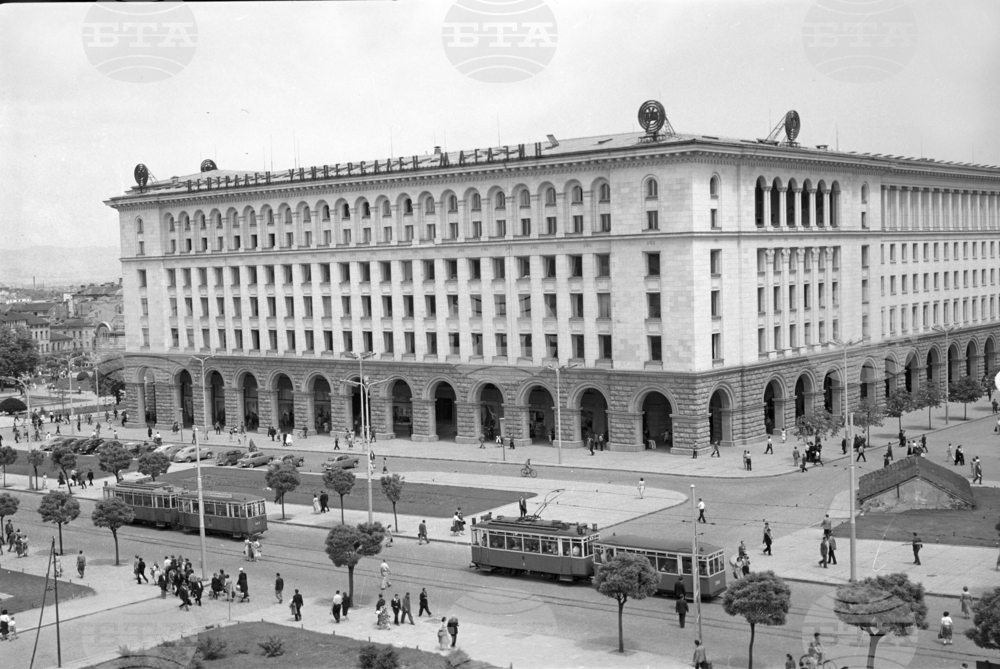site.btaApril 3, 1879: Sofia Becomes Capital of Bulgaria


On April 3, 1879, the Constituent Assembly unanimously elected Sofia as the capital of the restored Bulgarian State. The reasons behind this decision are recounted in the City of Sofia, Sofia Anniversary Book (1928), published by the Committee for the History of Sofia at the Bulgarian Archaeological Institute and part of the BTA library's book collection.
One of the articles in the book, Sofia as a Political and Cultural Centre by Prof. Stefan G. Balamezov, reads:
In October 1878, the Civil Administration, headed by Imperial Commissar Prince Dondukov-Korsakov, was moved from Plovdiv to Sofia. Plovdiv was becoming the main city of Eastern Rumelia, a province with administrative autonomy as outlined in Article 13 of the Berlin Treaty. Thus, following the arrival of the International Commission in Plovdiv, Dondukov-Korsakov handed over the temporary civil administration to General Stolypin and had to move to the Principality of Bulgaria to prepare its administrative organization, draft the Organic Statute, and arrange for the election of a Prince, as per Articles 6, 4, and 3 of the Berlin Treaty. But why was Sofia chosen? There must have been many considerations. One of the officials in Dondukov-Korsakov’s office noted that the move to Sofia was also necessitated by the unrest and upheavals in neighbouring Macedonia and Albania at the time, which required strict Russian oversight both politically and militarily. It was in Sofia that responses were received to 16 key questions sent on October 8 from Plovdiv to 16 prominent Bulgarians regarding the future governance of the Principality of Bulgaria. It was also in Sofia that the final editing of the draft Organic Statute – the future Bulgarian Constitution – was completed.
Highlights of Sofia's contemporary history:
- January 4, 1878: Russian troops liberate the city from Ottoman rule.
- April 3, 1879: The Constituent Assembly unanimously elects Sofia capital of the restored Bulgarian State.
- 1880: Population census counts 20,856 residents of Sofia.
- 1884: Running water is installed in the city.
- November 26, 1884: First telephone call in Sofia.
- 1887: Sofia's population numbers 30,928.
- May 1, 1888: Sofia Zoo is established.
- July 5, 1888: Tsaribrod-Sofia-Vakarel-Belovo railway commissioned for domestic service.
- August 1, 1888: First international rail service via Sofia goes into operation, along the London-Paris-Vienna-Budapest-Belgrade-Nis-Tsaribrod-Sofia-Belovo-Plovdiv-Adrianople-Constantinople route.
- 1896: The first automobile appears in the streets of Sofia.
- March 22, 1897: First cinema projection in Sofia.
- November 1, 1900: First electric street lights are switched on.
- January 1, 1901: First electric tramway service goes into operation.
- November 15, 1910: First airplane overflies Sofia.
- December 31, 1910: Sofia's population tops 100,000.
- March 12, 1912: The first motor traffic regulations in Sofia are issued.
- March 15, 1927: Air France opens the first international air service with Sofia on its route (Paris-Belgrade-Sofia-Istanbul).
- March 20, 1930: First sound film projection.
- April 26, 1935: First bus service opens.
- February 8, 1941: First trolley bus service is launched.
- 1946: Sofia's population reaches 436,623.
- June 29, 1947: first domestic air service, between Sofia and Bourgas via Plovdiv, is inaugurated.
- 1975: Sofia becomes a million-strong city.
- March 22, 1978: Ground broken for Sofia's underground railway system.
- January 28, 1998: The first line of Sofia's underground railway is commissioned.
- December 31, 2023: According to National Statistical Institute data as of December 31, 2023, a total of 1,286,965 people live in Sofia Municipality.
/MR/
news.modal.header
news.modal.text